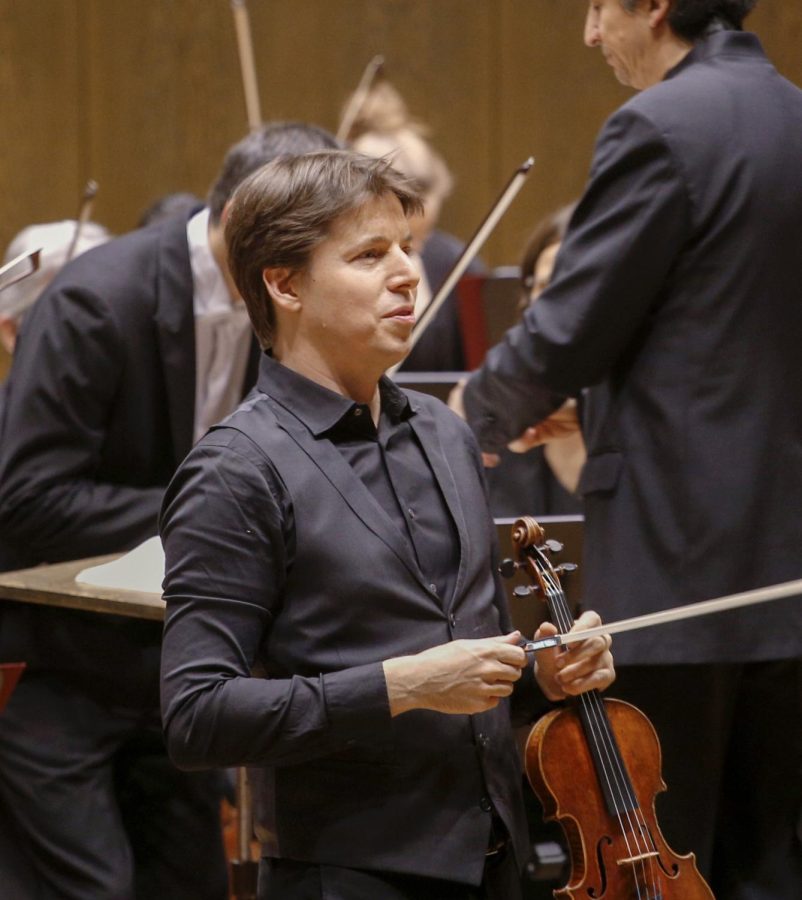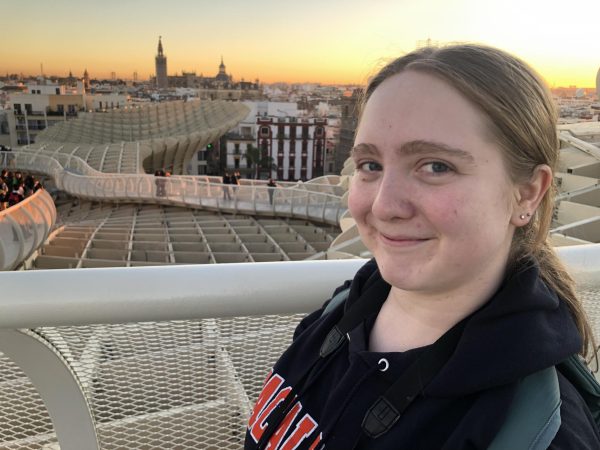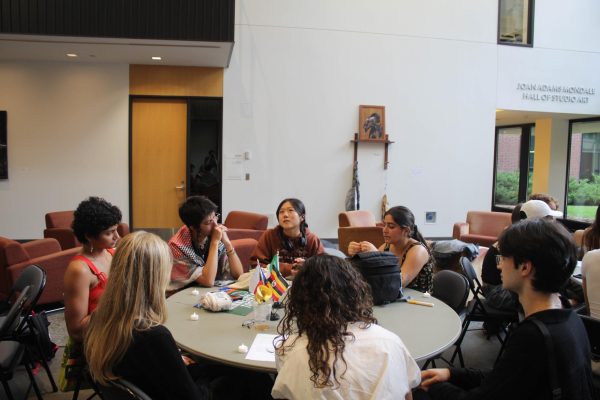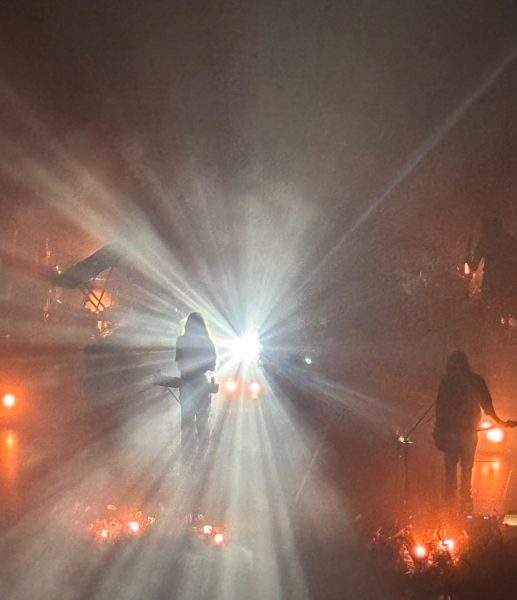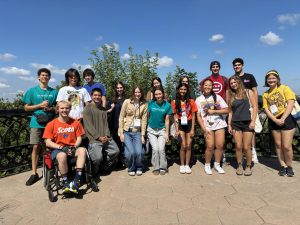Joshua Bell astounds at Ordway Concert Hall, plays a Stradivarius
November 17, 2022
On Nov. 10, I got to witness the opening night of the Saint Paul Chamber Orchestra (SPCO) collaboration with a world-renowned violinist. I went with a group of my other friends who are also classical music aficionados, but the real draw was the star guest: the violinist Joshua Bell.
Bell has been playing the violin from a young age, and made his soloist debut with the Philadelphia Orchestra when he was 14 years old. He has also won a Grammy for his recordings of classical solo pieces. Despite having a career of nearly 40 years, Bell shows no signs of slowing down, as the concert on Thursday night proved.
The concert, with a runtime of approximately two hours, featured Bell in multiple roles over the course of the night. He played all the pieces on his Stradivarius violin known as the “Gibson ex Huberman,” named after the violin’s previous owner. The instrument is over 300 years old and was crafted in 1713 during what is known as the Golden Period in the history of the Stradivarius company.
Bell and his violin cut an impressive figure as he walked onto the stage of the Ordway Concert Hall. The first piece performed was “Symphony No. 25” by Wolfgang Amadeus Mozart. During this piece, Bell sat in the position of concertmaster of the orchestra.
The Symphony was composed by Mozart when he was 17 years old. It is only one of two symphonies written by Mozart in G Minor. Fans of the film “Amadeus” may recognize the first movement of the piece as the opening music of the 1984 film.
Notably, there was no conductor for the entire performance. Instead, Bell would often cue the orchestra with his bow in place of a baton. Nevertheless, the orchestra was in perfect synchronicity as they played their way through the song.
Bell played through all of the movements in addition to leading the whole orchestra with a barely-contained energy as he swayed in his seat, feeling the music. As he played, a sort of spell was cast on the audience as everyone became entranced through his playing, the hall so quiet you could hear him breathing sharply to conduct the orchestra.
The final note of the symphony hung in the air before the audience broke out in thunderous applause. Bell stood and took a bow before leaving the stage to give space for the stage to be rearranged as necessary for the following piece: “Max Bruch’s Violin Concerto No. 1.”
The first movement of the piece, like the symphony before, was also in G Minor. The second movement, titled “Adagio”, was keyed to the scale of E-flat Major. The Finale movement was in G Major, as can be common for symphonies to end on major chords of some variation. It is considered to be one of Bruch’s best known pieces and a cornerstone piece for any solo violin repertoire.
Bell returned to the stage and this time assumed the position of soloist at the head of the orchestra. He cued the ensemble behind him and the piece started in earnest with the Prelude.
Bell astounded the audience with his range and abilities on the violin. While the violin solo sections of the Prelude sounded wistful and melancholy, the sections where the symphony played almost gave the piece a happy feeling, creating a fascinating blend of emotions.
The Adagio was a happier and free-flowing movement, the orchestra constantly moving as Bell’s violin solo floated above. It has been referred to by some as the heart of the concerto, and it was easy to see why as Bell led the orchestra through the piece.
The Finale was also a work of art, proving Bell’s skill as both a soloist and as a concertmaster as he lead the orchestra in a fast-paced movement. By the end, I could close my eyes and it almost felt like I was flying over the countryside, soaring through the clouds as Bell’s solo lifted me up.
The piece came to an end and before everyone filed out of the hall for a brief intermission, the audience rose and applauded Bell as well as the whole orchestra. Over the course of two short movements, Bell proved why he is still considered one of the best violin players of our modern age. The movements contrasted with each other well and provided Bell with ample opportunity to display his skills to the audience.
Upon returning to the hall from intermission, the stage was once again set for Bell to sit among the orchestra as the concertmaster and conductor for one final piece. The chosen piece was Georges Bizet’s “Symphony No. 1.”
Bizet also wrote the famous Carmen opera. However, the concerto was written well before Carmen; Bizet wrote it for his homework in music school and then shoved it into a desk drawer and forgot about it. Despite being an early work, the symphony enchanted the audience with four movements, each of which brought a different energy to the concert hall.
The first movement set the tone, starting out quickly but still managing to maintain a light feeling with a happy melody which made its way around the orchestra. There was even an oboe solo in the first movement that filled the space and drew all eyes to the oboe player of the SPCO.
The following movement was a slower movement which once again worked to highlight the oboe as the wind section of the orchestra was given a chance to shine. The final note of the movement rang through the hall before the orchestra dove into the third movement.
In a bouncy and assertive third movement, Bell continued to lead the orchestra through the fast-paced section of the symphony. He played with so much energy that a string on his bow snapped, a common occurrence for string players but still fascinating to witness.
By the time the fourth movement came around, the audience had been thoroughly drawn into the piece and into Bell’s astounding leadership of the ensemble. The Finale was full and rich, highlighting different sections of the orchestra as needed. There were even echoes of the main melody of the Carmen Opera, reminding the audience who exactly wrote this piece.
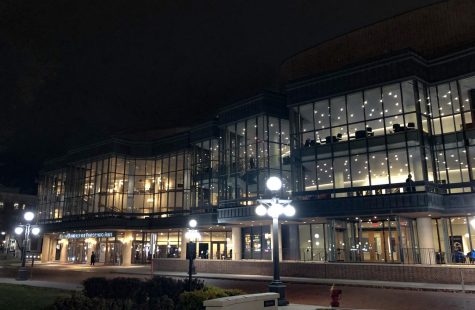
The Finale came to an end and the audience rose to their feet in a standing ovation, everyone seemingly overwhelmed by the performance they had just witnessed. Bell took a bow and then left the stage, coming out again to another round of applause in the Ordway Concert Hall.
I left the performance feeling thoroughly astounded by what I had just witnessed. Bell proved why he deserves the title of virtuoso and the SPCO showed their range of talent and capabilities to the audience that night.
The performance was done three more times after that night with what I am sure was just as much talent as I saw displayed last Thursday night.
The SPCO has a range of performances over the year, concerts being put on for many different tastes. Tickets for students are free. More information about upcoming performances can be found at thespco.org

